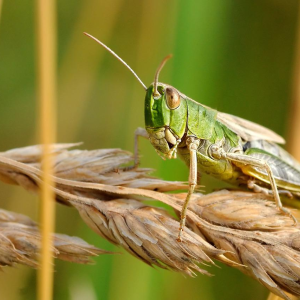
This paper identifies research priorities relating to threats to global food security caused by extreme events such as heat waves, floods, war or financial crises. Focusing on the next two decades, the authors asked experts for emerging threats to food security as well as research questions, which were then ranked according to their potential impact and effort required to answer them.
Several cross-cutting themes emerged from the list of risks to food security, including:
- Compounding events and cascading risks, for example heatwaves and droughts occurring together in sub-Saharan Africa, or monsoon and meltwater disruptions happening simultaneously in Asia. These concurrent risks could be driven by climate warming, disruptions to atmospheric circulation patterns, or crossing of climate tipping points. This risk category also includes disruption to infrastructure or choke points in food supply chains, leading to multiple actors being impacted. (The TABLE podcast Rob Bailey on Chokepoints and Vulnerabilities is relevant here.)
- Vulnerability and adaptive capacity. Issues in this category include increased water demand from population growth, with resulting pressures on groundwater supplies and irrigation; poverty combined with price spikes in food commodities; loss of crop and livestock diversity on farms caused by increasing industrialisation; concentration of food flows in supply chains; and loss of ecosystems services.
- Cooperation and conflict. Political instability, terrorism, civil unrest and armed conflict were seen as threats to food security, as were migration (both for its direct effects on refugees’ food security, and for its impacts on international cooperation), geopolitical conflicts over resources on land and at sea, political polarisation, and trade barriers.
- Other threats to food security included pest and disease outbreaks (such as fall armyworm and locusts) and marine heatwaves.
The research questions identified were grouped into three main categories:
- Better maps and predictions to identify risks and forecast and respond to extreme events. Currently, limitations include a lack of funding for “on the ground” inputs to such systems, as well as weak data governance in some areas. Specific research questions include:
- “How can remote sensing technologies best contribute to reducing food insecurity and better understand increasing extreme events in data-scarce areas?”
- “How can big data, artificial intelligence and machine learning best be used to improve early warning systems?”
- “How will geographies of pests change in the face of climate change?”
- Farm-level interventions to both stabilise food supply and protect the livelihoods of farmers, herders, hunters and fishers. Research questions include:
- “Which on-farm practices increase resilience to drought, are cost-effective and easily adopted?”
- “What are the effects of crop diversification on pest, drought, and disease resistance?”
- “How context dependent are on-farm resilience practices across the world, and are there common themes, interventions and technologies that work across multiple locations?”
- Food system transformation to address structural constraints, building on the work of groups such as the Committee on World Food Security at the UN, IPES-Food, International Assessment of Agricultural Knowledge, Science and Technology for Development, and the UN Food Systems Summit. Research questions here were deemed to be generally more challenging to answer than those in other categories. They include:
- “How can food production and supply chains be made robust to disruptions from extreme events affecting multiple regions, or the same region sequentially?”
- “What does governance for resilient food systems look like?”
- “How does land access affect rural vulnerability to extreme events, and what has been the effect, globally, of land reform efforts on food security and poverty in the face of extreme events?”
Abstract
Extreme events, such as those caused by climate change, economic or geopolitical shocks, and pest or disease epidemics, threaten global food security. The complexity of causation, as well as the myriad ways that an event, or a sequence of events, creates cascading and systemic impacts, poses significant challenges to food systems research and policy alike. To identify priority food security risks and research opportunities, we asked experts from a range of fields and geographies to describe key threats to global food security over the next two decades and to suggest key research questions and gaps on this topic. Here, we present a prioritization of threats to global food security from extreme events, as well as emerging research questions that highlight the conceptual and practical challenges that exist in designing, adopting, and governing resilient food systems. We hope that these findings help in directing research funding and resources toward food system transformations needed to help society tackle major food system risks and food insecurity under extreme events.
Reference
Mehrabi, Z., Delzeit, R., Ignaciuk, A., Levers, C., Braich, G., Bajaj, K., Amo-Aidoo, A., Anderson, W., Balgah, R.A., Benton, T.G. and Chari, M.M., 2022. Research priorities for global food security under extreme events. One Earth, 5(7), pp.756-766.
Read the full paper here. See also the TABLE explainer What is food security?







Post a new comment »